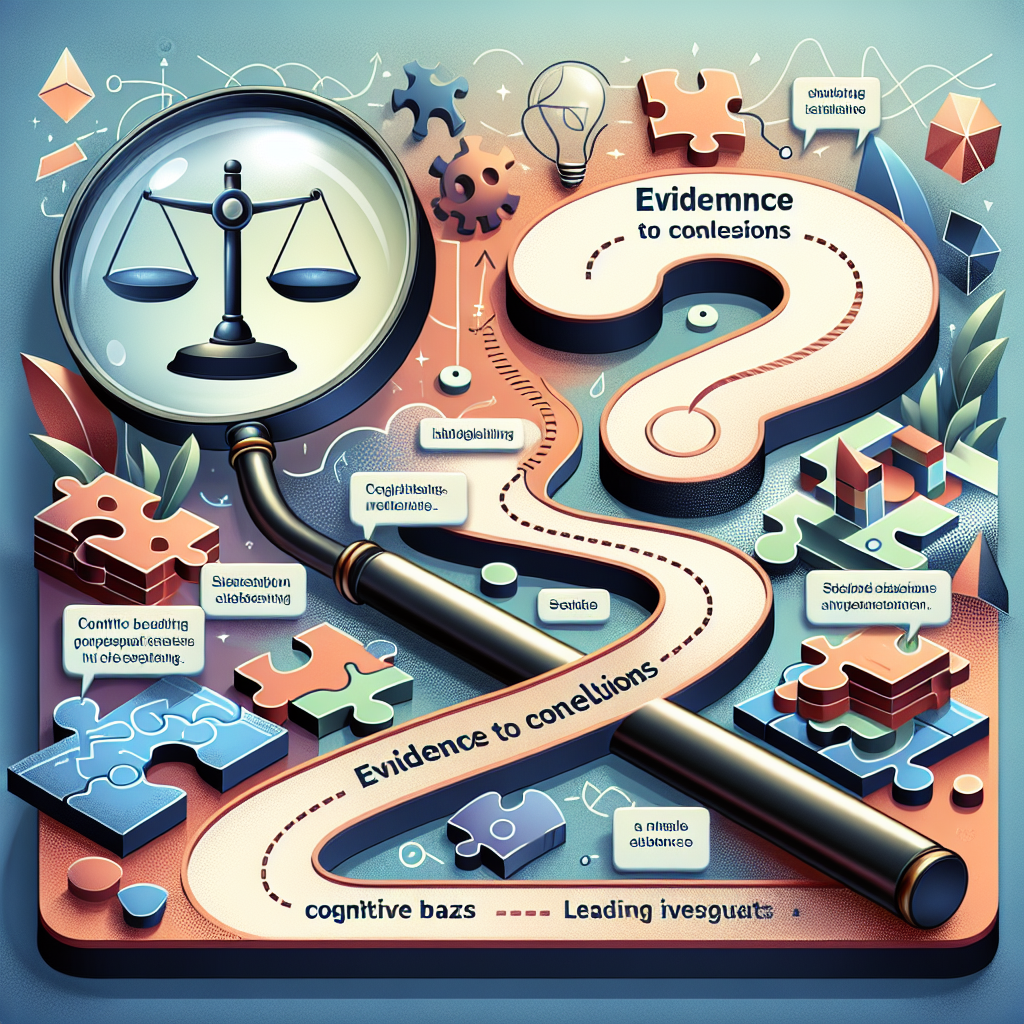Introduction
Imagine you’re a detective stepping into a chaotic crime scene. The evidence lies scattered, but your mind is already racing toward conclusions based on your past experiences and assumptions. Welcome to the fascinating—and often perilous—world where cognitive biases operate. In the realm of investigation, the journey from evidence to conclusions can be a treacherous path, especially when cognitive biases sneak in to distort our perceptions and interpretations. In this article, we will explore From Evidence to Conclusions: The Role of Cognitive Bias in Misleading Investigators, emphasizing critical insights while highlighting real-world applications.
The Nature of Cognitive Bias
What is Cognitive Bias?
Cognitive bias refers to the systematic ways in which the context and framing of information influence our judgments and decisions. These biases often operate unconsciously, shaping how investigators interpret evidence. Cognitive biases can lead to oversights or misinterpretations, ultimately affecting the quality of investigations.
Key Types of Cognitive Bias:
| Cognitive Bias | Description |
|---|---|
| Confirmation Bias | The tendency to favor information that confirms existing beliefs. |
| Anchoring Bias | Relying heavily on the first piece of information encountered. |
| Hindsight Bias | The inclination to see events as having been predictable after they have already occurred. |
| Availability Heuristic | Evaluating the likelihood of events based on how easily examples come to mind. |
How Cognitive Biases Impact Investigations
As investigators sift through evidence, several cognitive biases come into play, often leading them astray. Let’s explore a few examples.
Confirmation Bias in Action
Case Study: The Central Park Five
One of the most infamous cases in U.S. history involves the wrongful conviction of five Black and Latino teenagers for the 1989 assault of a jogger in Central Park. Investigators became fixated on a particular narrative, and existing prejudices clouded their judgment. Evidence supporting their assumptions was prioritized, while exculpatory evidence was largely ignored. This exemplifies how confirmation bias can mislead investigators, leading to disastrous consequences.
Analysis: The Central Park Five case highlights how predetermined conclusions can blind investigators to alternative explanations, ultimately resulting in wrongful convictions and a loss of trust in the justice system.
Anchoring Bias: The “First Impression” Dilemma
Case Study: The Murder of Meredith Kercher
In the widely-publicized case of Meredith Kercher, American student Amanda Knox faced accusations of her murder. During the investigation, the Italian police initially honed in on Knox’s behavior and statements, leading to a swift anchoring on a suspect who didn’t match all evidence. This anchoring bias caused law enforcement to overlook other critical leads, resulting in a prolonged legal battle.
Analysis: This case illustrates how investigators can become ensnared by the first narrative they encounter, steering them away from the path of truth.
The Role of Hindsight Bias in Investigation
Case Study: The Chernobyl Disaster
When examining the catastrophic Chernobyl disaster, many analysts fall victim to hindsight bias, claiming the series of errors that led to the nuclear meltdown were foreseeable. This bias can create misleading conclusions about the effectiveness of prior safety measures, obscuring the lessons learned for future protocols.
Analysis: Hindsight bias can warp the understanding of past events, leading investigators to become overconfident about predicting future occurrences and ignoring systemic flaws.
Overcoming Cognitive Bias
Understanding the nature of cognitive biases is essential for investigators aiming for objectivity. Here are key strategies to mitigate their impact:
- Awareness Training: Investigators should undergo training focusing on cognitive biases to help recognize and counteract them in real-time.
- Diverse Teams: Encouraging collaboration among individuals with varied backgrounds and experiences can dilute the impact of individual biases.
- Skeptical Inquiry: Implementing a culture of skepticism where every assumption and piece of evidence is rigorously questioned can foster more rounded conclusions.
The Importance of Data Interpretation
In addition to cognitive biases, how evidence is interpreted can significantly affect outcomes. The representation and visualization of data play critical roles.
Utilizing Tables and Charts
When presenting data, clear visualizations can help prevent misinterpretation:
| Type of Evidence | Credibility Level | Potential for Misinterpretation |
|---|---|---|
| Eyewitness Testimony | Medium | High |
| Forensic Evidence | High | Low |
| Digital Evidence | Medium | Medium |
Conclusion
Investigations hinge upon the careful movement From Evidence to Conclusions: The Role of Cognitive Bias in Misleading Investigators is profound and multifaceted. Whether through confirmation, anchoring, or hindsight biases, the path to uncovering reality is fraught with pitfalls. Recognizing these biases—and implementing strategies to mitigate their effects—is essential for fostering trust in investigative processes and ensuring justice prevails.
As we move towards a more informed and bias-aware society, it’s essential that each of us advocates for deeper understanding and responsibility—in data interpretation and in life.
FAQs
1. What is cognitive bias?
Cognitive bias is a systematic pattern of deviation from norm or rationality in judgment, leading to illogical conclusions based on errors in perception, memory, or reasoning.
2. How can cognitive bias affect investigations?
Cognitive biases can distort how evidence is perceived, leading investigators to favor preconceived conclusions and potentially overlook crucial evidence or alternative explanations.
3. What are the most common types of cognitive biases in investigations?
Common biases include confirmation bias, anchoring bias, hindsight bias, and the availability heuristic, all of which can mislead investigators in different ways.
4. How can investigators mitigate cognitive bias?
Awareness training, promotion of diverse teams, and fostering a culture of skepticism can help investigators recognize and reduce the impact of cognitive biases.
5. Is there research supporting the impact of cognitive bias in investigations?
Yes, numerous studies highlight the detrimental effects of cognitive bias in various fields, including criminal justice, healthcare, and business decision-making, emphasizing the need for systemic approaches to reduce these biases.
By examining the intricate pathways of cognitive bias, we can illuminate the dark corners of investigative reasoning, ensuring that once we have gathered evidence, we follow a more reliable path to conclusions. The journey is fraught with challenges, but with knowledge, we can pave the way to justice and truth.

